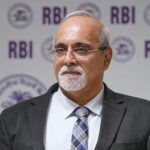India’s credit ecosystem is in an expansionary phase, with lending to micro, small and medium enterprises (MSMEs) emerging as a vital growth engine. MSME credit has crossed the ₹40 trillion mark as of March 2025, reflecting an annual growth rate of nearly 20%. Asset quality is improving too, with serious delinquencies at a five-year low of 1.8%. Yet, beneath these encouraging indicators lies a fragmented landscape where the availability and quality of credit remain uneven across segments, geographies and borrower profiles.
Growth Masks Persistent Exclusion
Headline growth in lending hides a slower expansion in the number of active borrowers. Loan accounts grew only about 1.3% year-on-year to 21.45 million, suggesting that credit is flowing disproportionately to larger or already banked enterprises, while smaller and first-time borrowers remain underserved. An estimated credit gap of ₹25–28 lakh crore underscores how many micro enterprises are still excluded from formal finance.
Uneven Distribution and Structural Barriers
A closer look at the drivers of this unevenness reveals multiple challenges. Lenders continue to perceive micro enterprises and unregistered units as higher risk due to limited collateral, thin balance sheets and shorter credit histories. Compliance costs and lengthy loan documentation disproportionately impact the smallest businesses, often deterring them from seeking formal credit altogether. Regional disparities persist, with metropolitan clusters and better-rated medium enterprises capturing a larger share of incremental lending, while rural and informal manufacturing units lag behind. Sectoral sensitivities such as input cost inflation, logistics constraints or policy changes in exports and subsidies further complicate risk assessments.
Economic and Risk Implications
The implications of this imbalance extend well beyond the credit books of banks and NBFCs. Restricted access to finance constrains the capacity of smaller firms to invest in technology, upgrade operations, or weather shocks, ultimately slowing job creation and productivity growth. A concentration of lending towards well-established borrowers can also create risk clusters, leaving financial institutions vulnerable if macroeconomic stress emerges. Uneven credit growth widens regional and social disparities, limiting the ability of credit to serve as a lever for inclusive economic development.
Bridging the Credit Divide
Closing these gaps calls for targeted interventions across policy, regulation and market practice. Credit guarantee schemes such as CGTMSE need to be strengthened to reduce lenders’ risk perceptions and encourage lending to first-time or small-ticket borrowers. The adoption of alternative data for credit scoring, leveraging GST filings, utility payments and digital transaction footprints can make it easier to evaluate micro enterprises that lack formal records. Streamlined approval processes, digital documentation, and single-window loan portals can help reduce friction and lower borrowing costs.
Tailored Support and Stable Policies
Tailored initiatives for under-served regions and sectors particularly agriculture-linked enterprises, rural manufacturers and export-oriented micro units should complement broader credit policies. Clear and stable regulatory frameworks, including predictable tax regimes and trade incentives, will support lender confidence and pricing discipline. Parallel efforts in financial literacy and business capability building will help small entrepreneurs manage cash flows and prepare robust loan proposals, improving their creditworthiness over time.
Balancing Growth with Resilience
India’s lending landscape is at a turning point. Credit is climbing, but its distribution remains uneven and its sustainability uncertain without structural reform. Strengthening the flow of finance to the smallest and most vulnerable enterprises is not only an economic imperative but a risk management priority. A resilient credit system will depend on how effectively India balances growth with inclusion, innovation with prudence and expansion with stability.











